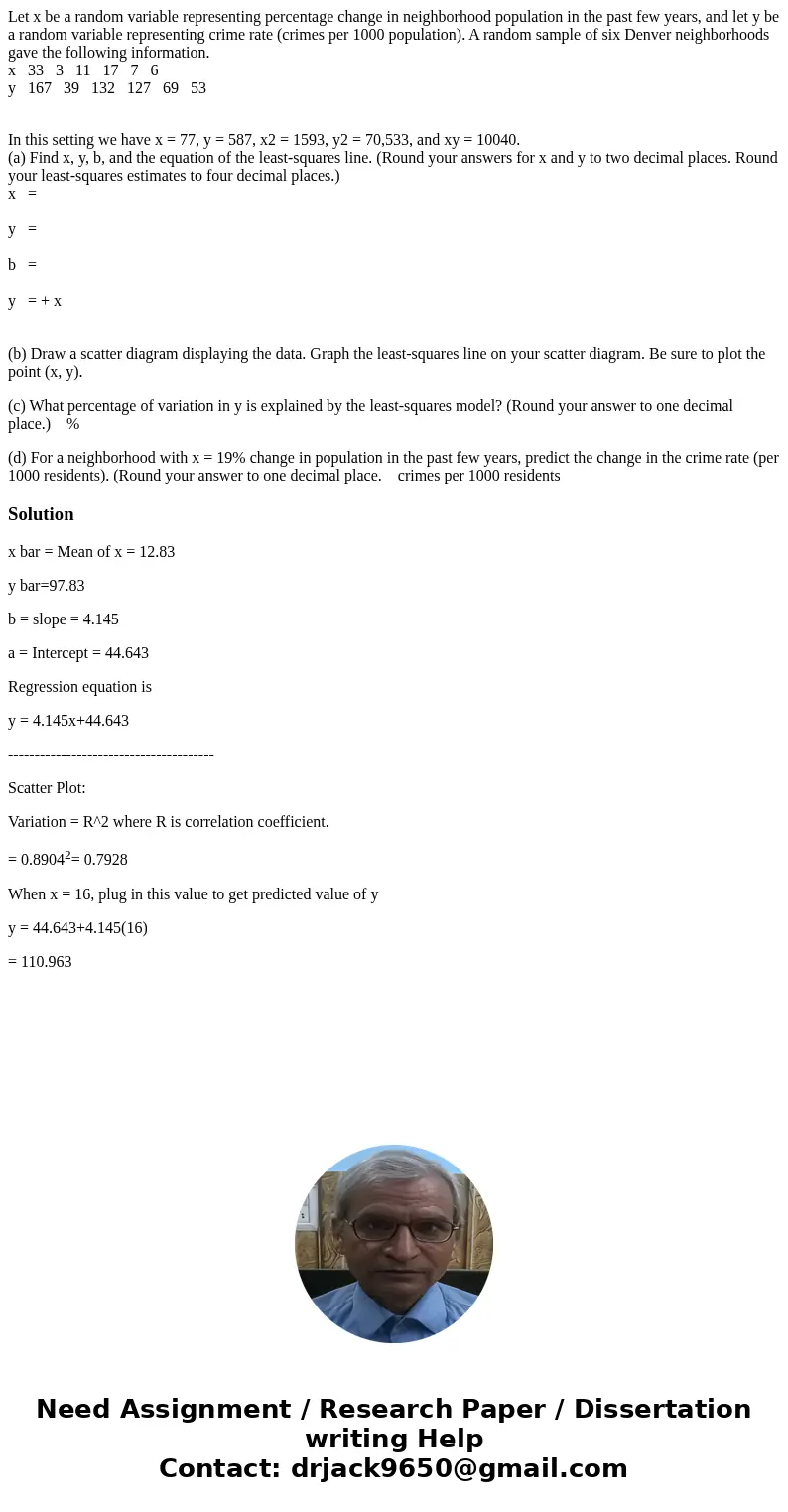Let x be a random variable representing percentage change in
Let x be a random variable representing percentage change in neighborhood population in the past few years, and let y be a random variable representing crime rate (crimes per 1000 population). A random sample of six Denver neighborhoods gave the following information.
x 33 3 11 17 7 6
y 167 39 132 127 69 53
In this setting we have x = 77, y = 587, x2 = 1593, y2 = 70,533, and xy = 10040.
(a) Find x, y, b, and the equation of the least-squares line. (Round your answers for x and y to two decimal places. Round your least-squares estimates to four decimal places.)
x =
y =
b =
y = + x
(b) Draw a scatter diagram displaying the data. Graph the least-squares line on your scatter diagram. Be sure to plot the point (x, y).
(c) What percentage of variation in y is explained by the least-squares model? (Round your answer to one decimal place.) %
(d) For a neighborhood with x = 19% change in population in the past few years, predict the change in the crime rate (per 1000 residents). (Round your answer to one decimal place. crimes per 1000 residents
Solution
x bar = Mean of x = 12.83
y bar=97.83
b = slope = 4.145
a = Intercept = 44.643
Regression equation is
y = 4.145x+44.643
---------------------------------------
Scatter Plot:
Variation = R^2 where R is correlation coefficient.
= 0.89042= 0.7928
When x = 16, plug in this value to get predicted value of y
y = 44.643+4.145(16)
= 110.963

 Homework Sourse
Homework Sourse